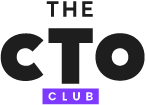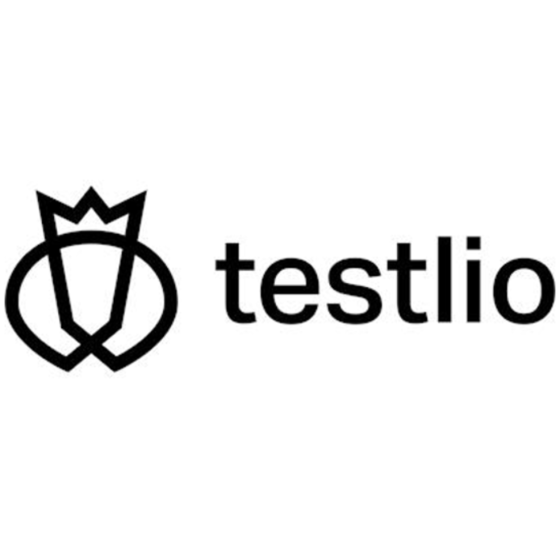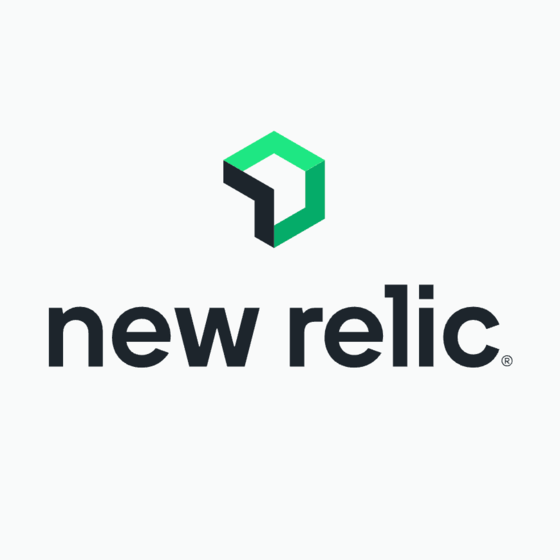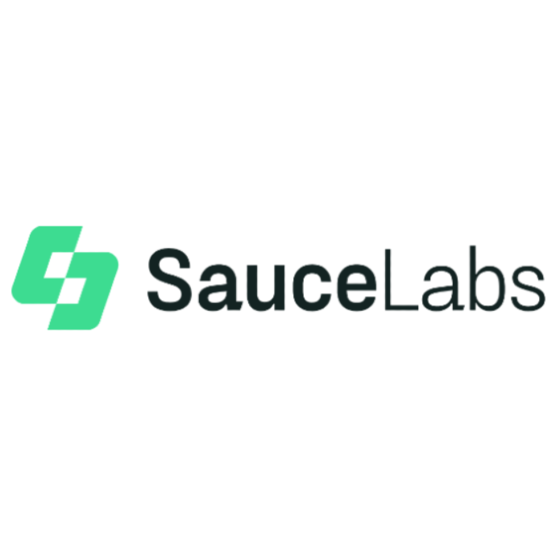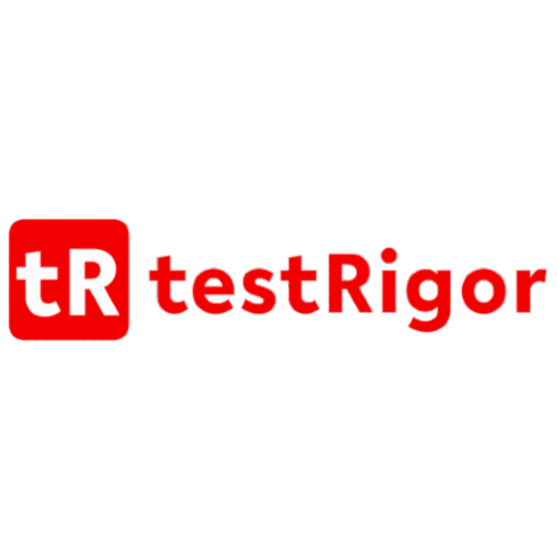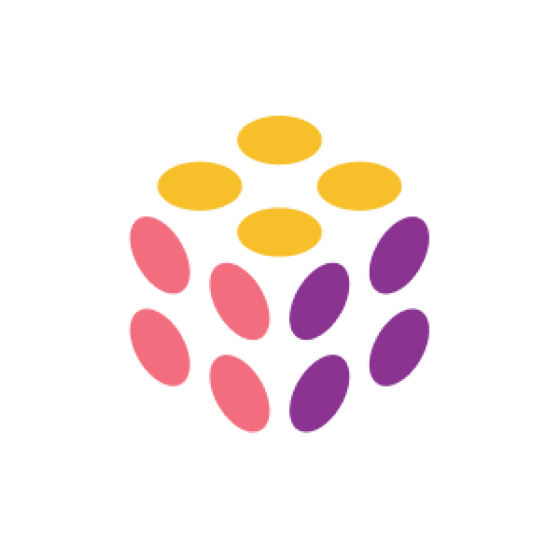Best Functional Testing Tools Shortlist
Here's my pick of the 10 best software from the 29 tools reviewed.
Our one-on-one guidance will help you find the perfect fit.
Ensuring your applications work flawlessly is a top priority. Functional testing tools are your go-to allies in catching bugs and improving software quality. They help you save time and reduce the headache of manual testing.
I’ve independently tested and reviewed various functional testing tools to bring you an unbiased list of the best options out there. You’ll find insights on what these tools offer, how they can fit your team's needs, and why they stand out.
Whether you're a seasoned developer or part of a dynamic tech team, this guide will help you make informed decisions about the tools that can elevate your testing process.
Why Trust Our Software Reviews
We’ve been testing and reviewing SaaS development software since 2023. As tech experts ourselves, we know how critical and difficult it is to make the right decision when selecting software. We invest in deep research to help our audience make better software purchasing decisions.
We’ve tested more than 2,000 tools for different SaaS development use cases and written over 1,000 comprehensive software reviews. Learn how we stay transparent & check out our software review methodology.
Best Functional Testing Tools Summary
This comparison chart summarizes pricing details for my top functional testing tools selections to help you find the best one for your budget and business needs.
| Tool | Best For | Trial Info | Price | ||
|---|---|---|---|---|---|
| 1 | Best for AI-driven test automation | Free trial available + free demo | Pricing upon request | Website | |
| 2 | Best for team collaboration | Free demo available | Pricing upon request | Website | |
| 3 | Best for full-cycle testing | 14-day free trial | Pricing upon request | Website | |
| 4 | Best for risk-based testing | Free trial available + free demo | Pricing upon request | Website | |
| 5 | Best for managed testing services | Not available | Pricing upon request | Website | |
| 6 | Best for performance monitoring | Free plan + demo available | Pricing upon request | Website | |
| 7 | Best for cross-browser testing | Free trial available + free demo | From $39/month (billed annually) | Website | |
| 8 | Best for AI-driven element targeting | 14-day free trial | From $212/month | Website | |
| 9 | Best for mobile app testing | Free trial available + free demo | From $83/month | Website | |
| 10 | Best for no-code test creation | Free trial available + free demo | From $300/month (billed annually) | Website |
-

Docker
Visit WebsiteThis is an aggregated rating for this tool including ratings from Crozdesk users and ratings from other sites.4.6 -

Pulumi
Visit WebsiteThis is an aggregated rating for this tool including ratings from Crozdesk users and ratings from other sites.4.8 -

GitHub Actions
Visit Website
Best Functional Testing Tool Reviews
Below are my detailed summaries of the best functional testing tools that made it onto my shortlist. My reviews offer a detailed look at the key features, pros & cons, integrations, and ideal use cases of each tool to help you find the best one for you.
Tricentis Testim is an AI-powered test automation tool designed for web, mobile, and Salesforce applications. Its main users include developers and QA teams who need to create tests rapidly and maintain quality in software releases.
Why I picked Tricentis Testim: This tool excels with its AI-driven capabilities, making test automation faster and more efficient. Its low-code test creation allows your team to build tests without extensive coding knowledge. The self-healing AI locators reduce maintenance by automatically adjusting tests as the application evolves. Integrated TestOps provides an organized approach to test management, ensuring your team stays on top of the testing process.
Standout features & integrations:
Features include advanced analytics for test results, customizable dashboards for monitoring, and a test scheduler to automate test runs. These features help your team track performance and plan testing activities efficiently.
Integrations include Jira, GitHub, Jenkins, Slack, GitLab, Azure DevOps, CircleCI, Bitbucket, Bamboo, and TeamCity.
Pros and cons
Pros:
- AI-driven test creation
- Low-code test authoring
- Efficient test management
Cons:
- Limited customization options
- Higher cost for small teams
QA Wolf is a cloud-based test automation platform aimed at development and QA teams. It facilitates the creation and execution of end-to-end tests, helping teams collaborate on test development and maintenance.
Why I picked QA Wolf: It's designed to enhance team collaboration with its shared workspace feature. Your team can create, manage, and execute tests together, fostering a collaborative environment. The platform's parallel test execution speeds up the testing process, allowing you to run multiple tests simultaneously. Built-in reporting tools help you track progress and identify areas for improvement.
Standout features & integrations:
Features include video recordings of test runs, which help your team analyze failures easily. The auto-retry feature reruns failed tests to confirm issues. QA Wolf also offers cloud-based test execution, eliminating the need for local setup.
Integrations include GitHub, GitLab, CircleCI, Slack, Trello, Jira, Azure DevOps, Bitbucket, Bamboo, and TeamCity.
Pros and cons
Pros:
- Team collaboration tools
- Parallel test execution
- Video recordings of tests
Cons:
- May need initial training
- Not ideal for all industries
Kualitee is a functional test management tool designed to support the entire software testing lifecycle. It caters to QA teams and enterprises seeking structured test case management, defect tracking, and requirement traceability. Kualitee offers both manual and automation support, making it a strong solution for teams looking to manage functional testing with efficiency and clarity.
Why I picked Kualitee: I chose Kualitee for its strong foundations in test case management and built-in defect tracking, both essential for effective functional testing. Its AI-powered test case generation streamlines the planning process, while customizable dashboards and requirement traceability help teams stay organized and aligned. With support for reusable test libraries and mobile access, Kualitee is well-suited for teams that need flexible, collaborative QA workflows. Its broad integration options also make it easier to embed testing processes into existing development environments.
Standout features & integrations:
Features include flexible role-based access controls to manage permissions across teams, reusable test repositories for faster regression testing, mobile app access for managing tests on-the-go, and robust reporting tools for visualizing project status and test execution results. It also provides integration with CI/CD pipelines to automate test workflows and improve deployment confidence.
Integrations include Jira, Jenkins, Selenium, Slack, Azure DevOps, GitHub, GitLab, Trello, Asana, Monday.com, Bitbucket, and CircleCI.
Pros and cons
Pros:
- Allows reusability of test cases
- Supports both manual and automated testing
- Customizable dashboards improve project visibility
Cons:
- Performance can lag with larger projects
- Occasional issues with integration functionality
Tricentis SeaLights is a quality intelligence platform designed for development and QA teams. It focuses on providing insights into test coverage and identifying high-risk areas in software releases.
Why I picked Tricentis SeaLights: It offers a unique approach to risk-based testing, allowing your team to prioritize testing efforts based on the potential impact. The platform's analytics provide a clear view of test coverage, helping you identify gaps and areas needing attention. SeaLights' change impact analysis highlights the parts of your application that require retesting after code changes. This feature helps your team focus on what matters most, optimizing testing resources effectively.
Standout features & integrations:
Features include test gap analysis, which helps your team pinpoint untested code areas. The platform provides real-time dashboards that offer insights into test progress. SeaLights also supports test optimization by identifying redundant tests.
Integrations include Jenkins, Bamboo, Azure DevOps, GitHub, GitLab, Bitbucket, Jira, and Slack.
Pros and cons
Pros:
- Focused on risk-based testing
- Highlights high-impact areas
- Real-time analytics
Cons:
- May require initial setup time
- Complexity for small teams
Testlio is a managed software testing service designed for businesses seeking comprehensive testing solutions. It serves enterprises and startups alike, offering functional, usability, and localization testing.
Why I picked Testlio: It provides managed testing services that cater to your specific needs, ensuring thorough coverage. The platform connects you with a global network of testers, allowing for diverse testing environments. Real-time collaboration tools enable your team to work seamlessly with testers. Detailed reporting and analytics help you make informed decisions about your software's quality.
Standout features & integrations:
Features include on-demand testing services, which allow you to scale testing efforts as needed. Testlio's platform offers detailed test case management for organized tracking. Additionally, you can access comprehensive test reports that provide insights into software performance.
Integrations include Jira, Slack, GitHub, Trello, Asana, Azure DevOps, TestRail, Bugzilla, Jenkins, and Zephyr.
Pros and cons
Pros:
- Access to global tester network
- Flexible testing options
- Real-time collaboration features
Cons:
- Limited control over tester selection
- Potentially complex for small teams
New Relic is a performance monitoring and observability platform primarily used by developers and IT operations teams. It helps you track application performance, detect issues, and gain insights into your software's health.
Why I picked New Relic: It offers comprehensive performance monitoring that provides real-time insights into your applications. You can use its distributed tracing feature to follow requests through a complex system. The platform's anomaly detection alerts you to potential problems before they impact users. Its customizable dashboards give your team a clear view of performance metrics.
Standout features & integrations:
Features include real-time user monitoring, which helps you understand user interactions and improve experiences. Customizable alerting allows your team to set specific performance thresholds. New Relic's infrastructure monitoring provides insights into server and cloud resources.
Integrations include AWS, Azure, Google Cloud Platform, Kubernetes, Docker, PagerDuty, Slack, Jira, Microsoft Teams, and GitHub.
Pros and cons
Pros:
- Real-time performance insights
- Distributed tracing capabilities
- User interaction tracking
Cons:
- Can be complex to set up
- Higher cost for small teams
Sauce Labs is a cloud-based testing platform tailored for developers and QA teams. It offers cross-browser testing, helping you ensure your web applications perform optimally across different browsers and devices.
Why I picked Sauce Labs: It provides extensive cross-browser testing capabilities with a wide range of browser and OS combinations. The platform offers a real device cloud, allowing your team to test on actual devices rather than simulators. Automated testing features let you run tests at scale, speeding up the testing process. Comprehensive analytics give you insights into test performance and application behavior.
Standout features & integrations:
Features include live testing capabilities that allow your team to interact with applications in real time. Sauce Labs also offers continuous testing with CI/CD support, helping integrate testing into your development workflow. The platform's secure testing environment ensures data safety during test execution.
Integrations include Jenkins, Bamboo, Travis CI, CircleCI, Jira, GitHub, GitLab, Bitbucket, Slack, and Microsoft Teams.
Pros and cons
Pros:
- Extensive browser and OS support
- Real device testing available
- Automated testing at scale
Cons:
- May require technical expertise
- Limited offline access
Reflect is a no-code testing tool that lets you build functional web tests just by describing what you want to happen. You don’t need to mess with selectors or write any scripts—it handles that for you using AI. It stands out for its AI-driven element targeting, which replaces brittle CSS selectors with natural-language instructions that adapt as your UI changes.
Why I picked Reflect: I picked Reflect because it saves time where it usually gets wasted. You can write tests in plain English, and it turns them into repeatable test steps. When your UI changes, Reflect adapts—so you're not constantly fixing broken tests. I also like how it pairs UI and API testing in one flow, which is something most tools don't do as cleanly.
Standout features & integrations:
Features include the ability to write tests using prompts, record actions directly in a browser, and run those tests across different browsers. Reflect also captures videos for every run and sends alerts if something breaks. It supports test data input, retries flaky runs, and works well in CI/CD pipelines.
Integrations include Slack, Jira, Linear, Azure DevOps, Bitbucket, CircleCI, GitHub, Jenkins, and Codefresh.
Pros and cons
Pros:
- No-code test creation
- AI-powered test maintenance
- Comprehensive CI/CD integration
Cons:
- Limitations to mobile app testing
- Could offer more customization options for test configurations
Kobiton is a mobile testing platform aimed at developers and QA teams. It facilitates the testing of mobile applications on real devices, ensuring your apps perform well across different environments.
Why I picked Kobiton: Its focus on real device testing provides an authentic user experience, which is crucial for mobile apps. The platform's support for both manual and automated testing gives your team flexibility in testing approaches. Kobiton's device lab management lets you access a wide range of devices without the need for physical hardware. Its performance monitoring features help identify and resolve issues quickly.
Standout features & integrations:
Features include instant health checks that provide quick insights into app performance. The platform offers automated scriptless testing, enabling your team to create tests without coding. Kobiton also provides detailed session reports to help analyze test results.
Integrations include Jenkins, Jira, CircleCI, Travis CI, GitHub, GitLab, Bitbucket, Slack, and Microsoft Teams.
Pros and cons
Pros:
- Real device testing access
- Supports manual and automated testing
- Device lab management available
Cons:
- Requires internet for full functionality
- Initial setup can be time-consuming
testRigor is an AI-powered test automation tool that caters to developers and QA teams. It allows users to create tests using plain English, focusing on web, mobile, and desktop applications.
Why I picked testRigor: The tool provides a unique no-code testing experience, allowing you to write tests in plain English. This feature minimizes the technical barrier, making it accessible for teams without extensive coding skills. Automatic test generation based on user behavior further enhances its usability. Its ultra-stable tests reduce maintenance time, setting it apart from other solutions.
Standout features & integrations:
Features include API testing, form-based UI testing, and the ability to handle complex workflows. It also offers ultra-stable tests that do not rely on XPath. These features help your team achieve high test coverage with minimal effort.
Integrations include GitHub, Jenkins, Jira, Slack, TestRail, Azure DevOps, CircleCI, Bitbucket, Bamboo, and TeamCity.
Pros and cons
Pros:
- No-code test creation
- Plain English instructions
- Automatic test generation
Cons:
- Pricing not publicly available
- Limited support for game testing
Other Functional Testing Tools
Here are some additional functional testing tools options that didn’t make it onto my shortlist, but are still worth checking out:
- Leapwork
For visual test automation
- SoapUI
For API testing
- Owlity
For autonomous test generation
- Katalon Studio
For cross-platform testing
- Avo Assure
For no-code automation
- Telerik Test Studio
For automated UI testing
- TestComplete
For script and scriptless testing
- Selenium
For open-source testing
- SmartBear ReadyAPI
For API load testing
- Rapise
For testing ERP and CRM apps
- Micro Focus Silk Test
For testing across web and mobile
- AutoIt
For automating Windows desktop tasks
- Tricentis Tosca Testsuite
For continuous testing across platforms
- Digivante
For crowdtesting services
- JUnit
For Java unit testing
- Micro Focus Unified Functional Testing (UFT)
For enterprise-grade testing
- IBM Rational Functional Tester (RFT)
For testing GUI and data-driven apps
- Ranorex Studio
For beginners with codeless automation
- Watir
For browser-based testing
Functional Testing Tool Selection Criteria
When selecting the best functional testing tools to include in this list, I considered common buyer needs and pain points like test coverage and ease of integration. I also used the following framework to keep my evaluation structured and fair:
Core Functionality (25% of total score)
To be considered for inclusion in this list, each solution had to fulfill these common use cases:
- Automating test execution
- Supporting multiple testing environments
- Providing detailed test reports
- Facilitating test management
- Ensuring cross-platform compatibility
Additional Standout Features (25% of total score)
To help further narrow down the competition, I also looked for unique features, such as:
- AI-driven test creation
- Self-healing test scripts
- Visual test automation
- Real-time analytics
- Risk-based testing insights
Usability (10% of total score)
To get a sense of the usability of each system, I considered the following:
- Intuitive user interface
- Easy navigation
- Customizable dashboards
- Minimal learning curve
- Clear documentation
Onboarding (10% of total score)
To evaluate the onboarding experience for each platform, I considered the following:
- Availability of training videos
- Interactive product tours
- Access to templates
- Webinars for new users
- Responsive chatbots
Customer Support (10% of total score)
To assess each software provider’s customer support services, I considered the following:
- Availability of 24/7 support
- Live chat functionality
- Comprehensive knowledge base
- Dedicated account managers
- Quick response times
Value For Money (10% of total score)
To evaluate the value for money of each platform, I considered the following:
- Pricing transparency
- Competitive pricing
- Variety of pricing tiers
- Features included in the base plan
- Discounts for annual billing
Customer Reviews (10% of total score)
To get a sense of overall customer satisfaction, I considered the following when reading customer reviews:
- Feedback on feature effectiveness
- User satisfaction with support
- Ease of integration
- Performance reliability
- Overall value perception
How to Choose Functional Testing Tools
It’s easy to get bogged down in long feature lists and complex pricing structures. To help you stay focused as you work through your unique software selection process, here’s a checklist of factors to keep in mind:
| Factor | What to Consider |
| Scalability | Ensure the tool can grow with your team. Look for features that support increasing test volumes and user numbers without a dip in performance. |
| Integrations | Check if it integrates smoothly with existing software like JIRA, Jenkins, Git, or other website testing tools. This ensures a streamlined workflow and reduces manual data entry. |
| Customizability | Verify if the tool allows customization to fit your unique testing processes. Custom scripts or dashboards can make a big difference. |
| Ease of Use | Look for a user-friendly interface that doesn’t require extensive training. This helps your team get up to speed quickly and reduces onboarding time. |
| Budget | Assess if the pricing aligns with your budget. Consider what features are included at different price points and if they meet your needs. |
| Security Safeguards | Ensure the tool offers robust security features to protect sensitive data. Look for encryption and compliance with data protection regulations. |
| Support | Check for 24/7 customer support availability. Quick resolution of issues can save time and reduce frustration for your team. |
| Test Coverage | Evaluate if the software includes solutions to a wide range of testing needs, including web accessibility testing tools, mobile compatibility, and API testing, to ensure comprehensive test coverage. |
Trends in Functional Testing Tools
In my research, I sourced countless product updates, press releases, and release logs from different functional testing tools vendors. Here are some of the emerging trends I’m keeping an eye on:
- AI-driven testing: AI is being used to create smarter testing processes. It helps in predictive analysis and self-healing test scripts, which reduce maintenance efforts. Vendors like Tricentis are integrating AI to enhance test accuracy and efficiency.
- Shift-left testing: Testing is moving earlier in the development process to catch bugs sooner. This trend allows teams to address issues before they escalate, saving time and resources. Tools are now supporting integration with development environments to facilitate this shift.
- Test environment management: Managing test environments is gaining attention to ensure consistency and reliability. This trend focuses on providing stable and replicable environments for testing. Some tools now include features to manage and provision environments efficiently, such as web application testing tools.
- Codeless testing: More tools are offering codeless test creation to make testing accessible to non-developers. This trend helps teams with diverse skill sets contribute to testing efforts. Solutions like Leapwork are leading in this area with visual test automation.
- Continuous testing: With the rise of DevOps, continuous testing is becoming essential. It ensures that testing is part of the CI/CD pipeline, allowing for faster releases. Vendors are enhancing tools to support continuous integration and delivery workflows.
What Are Functional Testing Tools?
Functional testing tools are software applications used to test the functionality of software products to ensure they work as intended. Developers, QA teams, and testers generally use these tools to identify bugs and verify that applications meet specified requirements. Automated test execution, test management, and visual regression testing tools support efficient testing processes and help teams deliver reliable software. Overall, these tools provide value by improving software quality and reducing manual testing efforts.
Features of Functional Testing Tools
When selecting functional testing tools, keep an eye out for the following key features:
- Automated testing: Automates test execution to save time and reduce human error.
- Cross-platform compatibility: Ensures that tests can be run across different devices and operating systems.
- Test management tools: Organizes and tracks testing activities to keep your team on the same page.
- Data-driven testing: Uses data inputs to test various scenarios, improving test coverage.
- Parallel execution: Runs multiple tests at the same time, speeding up the testing process.
- AI-driven insights: Provides predictive analysis and self-healing scripts to enhance test accuracy.
- Codeless test creation: Allows non-developers to create tests, broadening team participation.
- Real-time analytics: Offers immediate feedback on test results to quickly identify issues.
- Integration capabilities: Connects with other tools like CI/CD pipelines to support continuous testing.
- Security safeguards: Protects sensitive data during testing by offering encryption and compliance features.
Benefits of Functional Testing Tools
Implementing functional testing tools provides several benefits for your team and your business. Here are a few you can look forward to:
- Improved software quality: Automated testing tools catch bugs early, ensuring your applications work as intended.
- Time savings: Parallel execution and automated tests reduce the time spent on manual testing.
- Cost efficiency: Early detection of defects prevents costly fixes down the line.
- Enhanced collaboration: Codeless test creation lets team members from different backgrounds contribute to testing.
- Increased test coverage: Cross-platform compatibility and data-driven testing explore more scenarios for thorough testing.
- Faster releases: Integration with CI/CD pipelines supports continuous testing, speeding up the release cycle.
- Better decision-making: Real-time analytics provide insights that help your team address issues promptly.
Costs and Pricing of Functional Testing Tools
Selecting functional testing tools requires an understanding of the various pricing models and plans available. Costs vary based on features, team size, add-ons, and more. The table below summarizes common plans, their average prices, and typical features included in functional testing tools solutions:
Plan Comparison Table for Functional Testing Tools
| Plan Type | Average Price | Common Features |
| Free Plan | $0 | Basic test execution, limited test cases, and community support. |
| Personal Plan | $10-$30 /user /month | Automated testing, cross-platform support, and basic analytics. |
| Business Plan | $40-$75 /user /month | Advanced SaaS testing tools, integrations with CI/CD tools, and enhanced analytics. |
| Enterprise Plan | $100+/user/month | Customizable dashboards, dedicated support, and advanced security features. |
Functional Testing Tools FAQs
Here are some answers to common questions about functional testing tools:
Can you automate functional testing?
Yes, you can automate functional testing by using tools and scripts to verify an application’s functionality. This approach simulates user interactions with the software and compares the actual outcomes with expected results. Automation helps reduce manual effort and increase test accuracy.
Is functional testing the same as UAT?
No, functional testing and UAT (User Acceptance Testing) are not the same. Functional testing focuses on verifying individual features and components, while UAT evaluates the software’s usability and suitability for end-users. UAT acts as a final check to ensure the software meets user needs before release.
What are the tools used for functional testing?
Popular tools for functional testing include Selenium, Playwright, and Applitools. These tools help automate testing processes, improve accuracy, and provide insights into software functionality. They are widely used by developers and QA teams to ensure software quality.
What are the two most common ways that functional testing is performed?
The two most common ways to perform functional testing are unit testing and smoke testing. Unit testing tools check individual components for functionality, while smoke testing ensures basic stability after each software build. Both methods help maintain software quality throughout development.
How does functional testing differ from non-functional testing?
Functional testing focuses on verifying specific features and functions of the software, ensuring they perform as expected. Non-functional testing, on the other hand, evaluates aspects like performance, security, and usability. Both types are crucial for delivering a well-rounded software product.
What challenges might you face with functional testing tools?
Challenges with functional testing tools can include integration difficulties, maintaining test scripts, and handling complex test scenarios. It’s important to choose tools that align with your team’s workflow and offer support for these challenges. Regular updates and community support can also be beneficial.
What's Next?
Boost your SaaS growth and leadership skills. Subscribe to our newsletter for the latest insights from CTOs and aspiring tech leaders. We'll help you scale smarter and lead stronger with guides, resources, and strategies from top experts!
